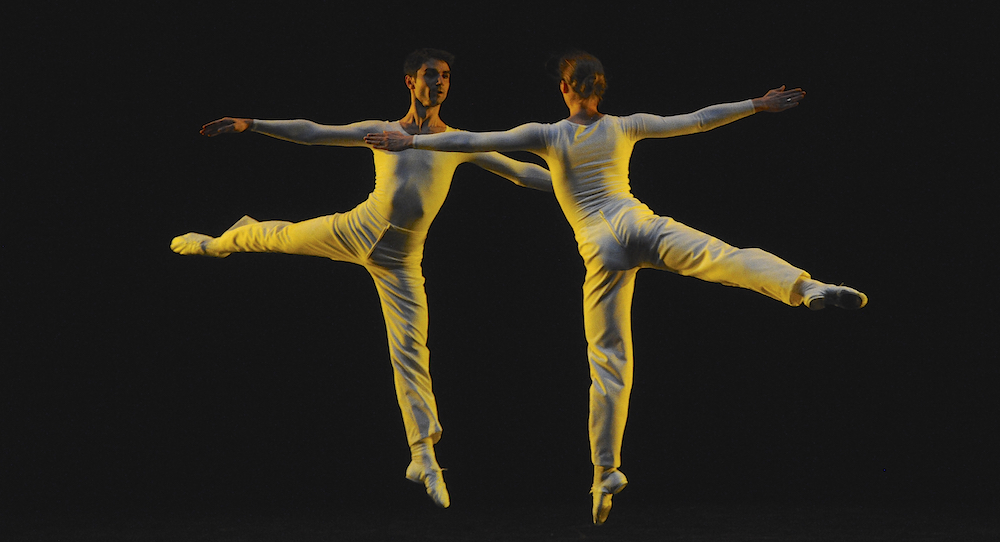New York City Center, New York, NY.
October 20, 2023.
New York City Center’s Dance Reflections by Van Cleef & Arpels Festival opened with a beloved presentation of Lucinda Childs’ 1979 work, Dance. Created in collaboration with composter Philip Glass and filmmaker Sol LeWitt, the 60-minute work exemplifies Childs’ drive to create and present work void of artifice, seeking essence only. Danced by the Lyon Opera Ballet, this work was presented for three performances in late October 2023. For this production, the film was re-created by Marie-Hélène Rebois in the style of the original, but with the current dancers of the Lyon Opera Ballet.
On a busy weekend of dance performances in the city, the theater at New York City Center was nearly full, and the house buzzed with energy. But once the performance started, the audience grew quiet and the only sound was the pulsating rhythm and repetition for the Glass score. The dancers and the film weave in and out of each other in surreal ways, as much of the footage is extremely large figures juxtaposed with human-sized ones, but shot and projected as if they were floating above the real dancers. It became a choose-your-own-adventure experience, depending on whether you choose to focus on the real dancers or the filmed ones (who were often the same). It made for an interesting game, one possible by the starkness and simplicity of the piece, as well as its construction.
There are three 20-minute sections to the work: one for eight dancers, a solo and a finale with four dancers. The choreography is repetitive and driving, but as the time passed became more complex and derivative of its former self. One could zone out and still be engaged with the almost unnoticeable shifts between movement patterns. Childs is known for her exploration of minimalism, her style honed during her time as part of Judson Dance Theater in NYC in the 1960s. She works first from music, and then discovers how movement and dance become integrated. By the time she started her company in 1973, her aim to create dances that were simple, geometrical, pattered had blossomed. Six years later, when Dance was created, this tendency had grown into an intellectual articulation of this goal.
Four decades later, Dance still captures the curiosity of making the simple complex – perhaps because of its minimalism. The type of movement, the music, the film and the costumes are all void of era, leaving the audience to see the work for its purest expression. A clarity that Childs would no doubt be happy to see persist. On this night, we were lucky enough to see her bow with the dancers and she did seem pleased, along with the audience on their feet, clapping vigorously.
By Emily Sarkissian of Dance Informa.















